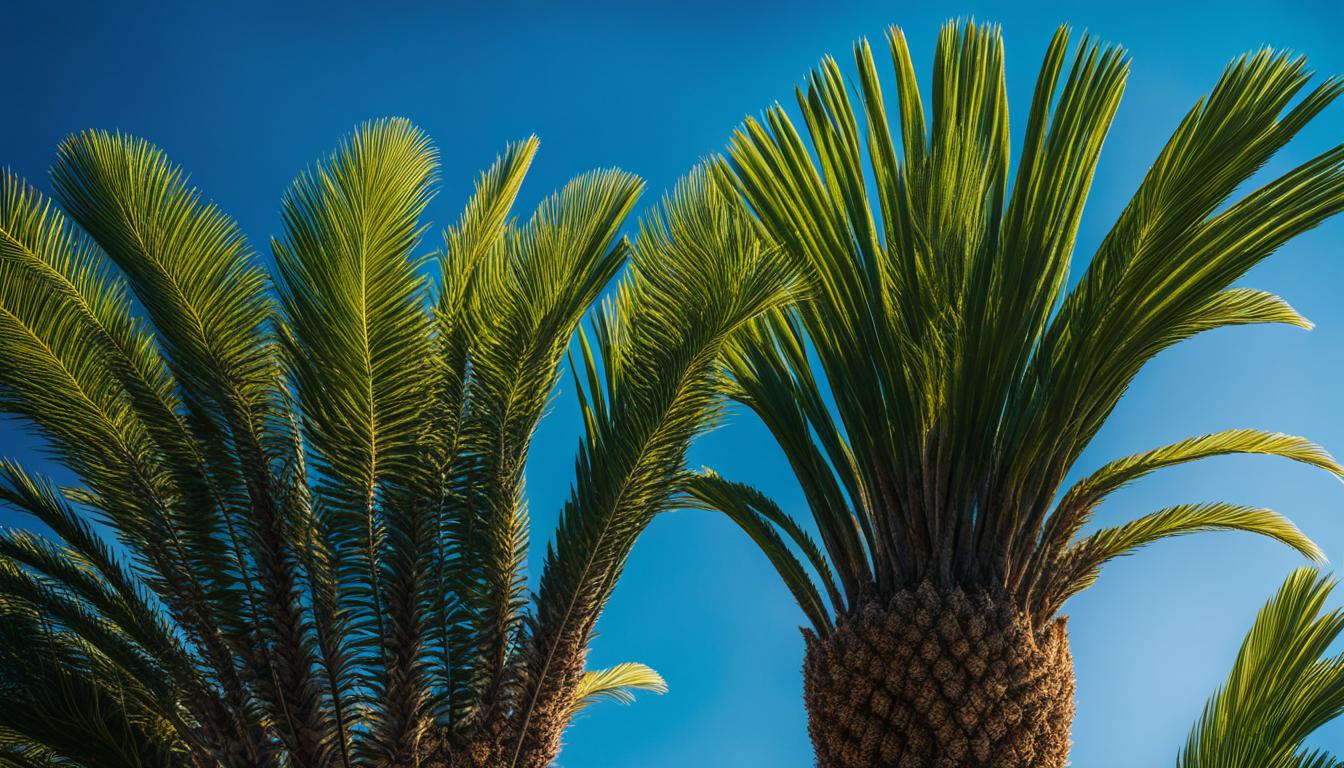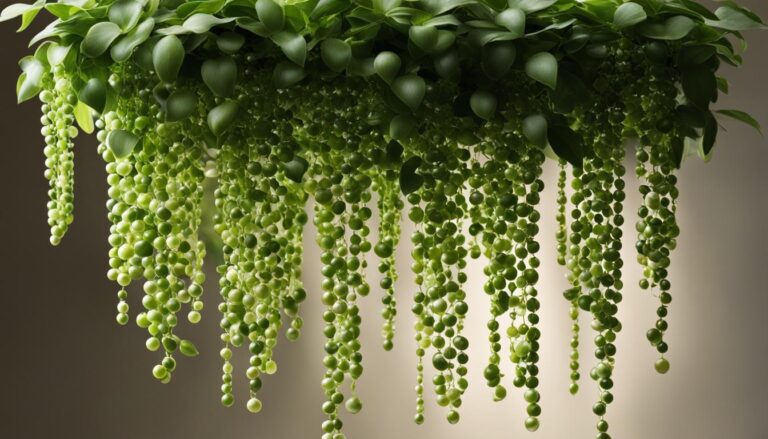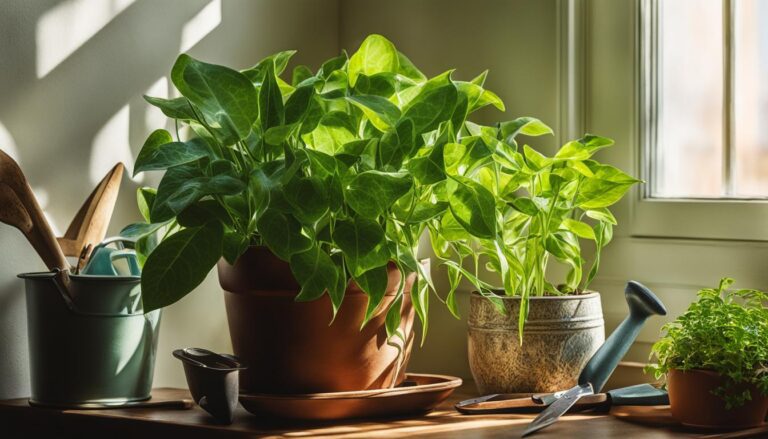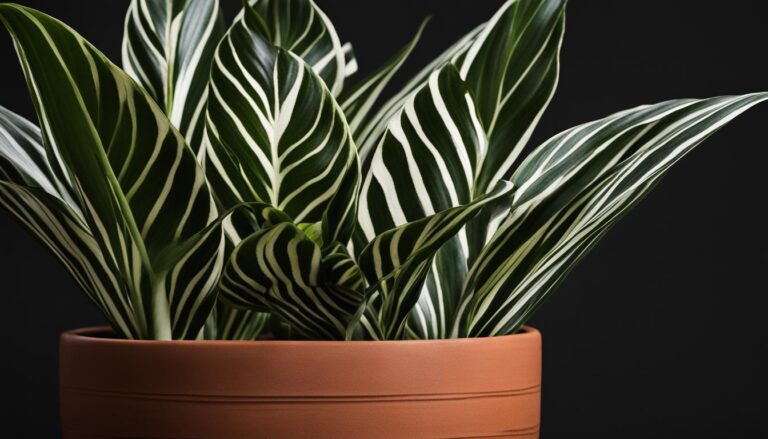
Welcome to my comprehensive guide on the Sago Palm (Cycas revoluta), a captivating plant species that has graced our planet since the Jurassic Period.
As a cycad native to subtropical regions of southeastern Japan, the Sago Palm has become a beloved ornamental plant in mild climates around the world.
With its stiff, glossy, deep green fronds that resemble plastic, the Sago Palm adds a touch of elegance to any indoor or outdoor space.
But mastering the care and maintenance of this slow-growing plant requires attention to detail and a deep understanding of its needs.
In this guide, I will take you through everything you need to know about caring for the Sago Palm, including its ideal growing conditions, cultivation techniques, and important considerations for its conservation and toxicity.
Whether you’re a seasoned gardener or a beginner plant enthusiast, this guide will equip you with the knowledge you need to ensure the success of your Sago Palm.
Now, let’s embark on a journey of discovery as we delve into the world of the Sago Palm and unlock the secrets to its mastery.
Sago Palm Varieties and Cultivation
When it comes to Sago Palms, there are several noteworthy varieties to choose from. One of the most popular and widely cultivated is the Cycas revoluta, which features stiff, glossy, deep green fronds.
This variety is native to subtropical areas of southeastern Japan and can be grown both indoors and outdoors, depending on the climate. In addition to Cycas revoluta, other species of cycads, such as Dioon edule and Encephalartos species, are also cultivated as landscape plants in mild climates.
When cultivating Sago Palms, it’s important to provide them with the right conditions for optimal growth. These plants thrive in bright light and require well-draining soil. They can tolerate dry conditions, but it’s essential to water them when the top inch of soil feels dry.
Overwatering should be avoided as it can lead to root rot. With proper care, Sago Palms are slow-growing plants that can live for a long time.
The Sago Palm Varieties
| Variety | Description |
|---|---|
| Cycas revoluta | A popular variety with stiff, glossy, deep green fronds. |
| Dioon edule | Another species of cycad commonly used in landscaping in mild climates. |
| Encephalartos | A group of cycads known for their ornamental value when planted in gardens. |
Whether you choose Cycas revoluta or other Sago Palm varieties, it’s important to follow the appropriate cultivation practices to ensure their well-being. These plants are resilient and can thrive in a variety of conditions, making them a versatile addition to any garden or indoor space.
Sago Palm Care and Maintenance
Taking care of a Sago Palm involves providing it with the right conditions and maintenance. When growing indoors, it is important to place the plant in a spot that receives bright, indirect light. If growing outdoors, choose a location that provides partial to full shade.
The Sago Palm prefers well-draining soil and should be watered when the top inch of soil feels dry. Overwatering can lead to root rot, so it’s essential to avoid excessive moisture.
Pruning is necessary to maintain the plant’s shape and remove any dead or yellowing fronds. It’s important to be cautious when pruning, as the plant’s sap and leaves are toxic to humans and pets.
It is recommended to wear gloves and wash hands thoroughly after handling the plant. Additionally, regular fertilization can help promote healthy growth. Use a balanced, slow-release fertilizer specially formulated for cycads, following the instructions on the packaging.
In summary, Sago Palm care involves providing the plant with bright, indirect light indoors or partial to full shade outdoors. It should be planted in well-draining soil and watered when the top inch of soil feels dry.
Pruning should be done cautiously to remove dead or yellowing fronds, and it is recommended to wear gloves when handling the plant. Regular fertilization with a balanced, slow-release fertilizer is also beneficial for healthy growth.
Sago Palm Toxicity and Conservation
When it comes to the Sago Palm, its beauty should not overshadow the fact that it is highly toxic. Every part of the plant, including the leaves and seeds, contains a toxin called cycasin.
This toxin can be extremely harmful if ingested, leading to symptoms such as vomiting, diarrhea, and liver damage. In severe cases, it can even be fatal. It is of utmost importance to keep the Sago Palm out of reach of children and pets who may be tempted to nibble on its foliage.
Handling the Sago Palm requires caution to avoid direct contact with the toxic sap or ingestion of any plant parts. It is advisable to wear gloves when handling the plant and to wash hands thoroughly afterward. The toxicity of the Sago Palm serves as a reminder that we must prioritize the safety of our loved ones.
Conservation also plays a vital role in the well-being of the Sago Palm and its counterparts. All species of cycads, including the Sago Palm, are regulated under CITES due to their endangered status in the wild.
They face numerous threats, including habitat destruction, illegal collection, and environmental events like floods and droughts. By supporting conservation initiatives and purchasing Sago Palms from reputable sources that adhere to sustainable practices, we can contribute to the preservation of these remarkable plants.
The Sago Palm’s toxicity and conservation needs remind us that while it is a stunning addition to our landscapes, we must handle it with care and always prioritize the well-being of both people and the environment.
FAQ
Is the Sago Palm a slow-growing plant?
Yes, the Sago Palm is a slow-growing plant that requires patience and time to reach its full size.
What kind of light does the Sago Palm need?
The Sago Palm requires bright light, whether grown indoors or outdoors. It should be placed in a spot that receives ample sunlight or in a well-lit area indoors.
How often should I water my Sago Palm?
The Sago Palm prefers well-draining soil and should be watered when the top inch of soil feels dry. It is important to avoid overwatering, as this can lead to root rot.
Can I prune my Sago Palm?
Yes, pruning is necessary to maintain the plant’s shape and remove any dead or yellowing fronds. However, it’s important to be cautious when pruning, as the plant’s sap and leaves are toxic. Wear gloves and wash hands thoroughly after handling.
Are Sago Palms toxic?
Yes, all parts of the Sago Palm, including the leaves and seeds, contain a toxin called cycasin. Ingestion of cycasin can be harmful to humans and pets and may cause symptoms such as vomiting, diarrhea, and liver damage. Take precautions to keep the plant out of reach of children and pets.
Are Sago Palms endangered?
Yes, all species of cycads, including the Sago Palm, are regulated under CITES due to their endangered status in the wild. It is important to support conservation efforts and only purchase Sago Palms from reputable sources that adhere to sustainable practices.






